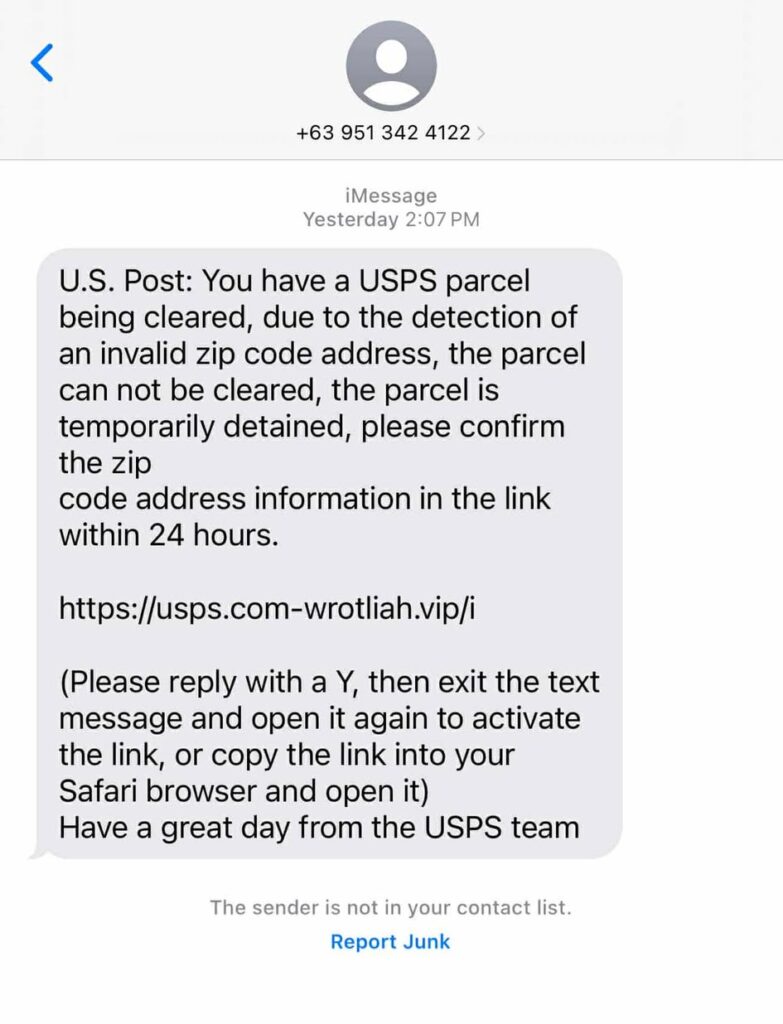
Beware of Fake Package Alerts This Holiday Season
During the holiday season, you may be ordering more gifts online. Unfortunately, scammers are banking on this uptick of online orders to trick people with fake delivery notifications. Here’s how to recognize and avoid these scams.
How the Scam Works
You might receive a email or text saying you missed a delivery or that a package couldn’t be delivered because of an issue with your address. Scammers often claim the package will be returned if you don’t act quickly, telling you to click a link to resolve the issue.
This is a phishing scam. Clicking on the link could allow scammers to access your personal information, such as your digital banking credentials, email and other account information. This could result in identity theft or allowing scammers to install malware on your devices.
What the Scam Could Look Like
Here’s an example of a common phishing text message. Notice how it instructs you to reply and copy a link into your web browser. While other phishing messages might include a clickable link, never trust a suspicious link in any form. This is a clear phishing scam. Many smartphones give you the ability to “Report Junk” text messages that come through as spam. This is highly recommended to keep your devices clear of junk & the scammers out of sight.

How to Protect Yourself
Do not click on any unexpected or suspicious links sent to you. If you’re unsure about a package, visit the retailer’s website directly or contact them to securely verify shipping and tracking details, rather than trusting the link in the message. Clicking on a suspicious link could expose you to phishing threats, and it’s better to be safe than sorry this holiday season.*
*Article information provided by the Federal Trade Commission Consumer Advice.




